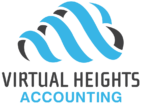The tax season brings an opportunity for Canadians to claim medical expenses on their tax returns. Understanding what qualifies as a deductible medical expense can not only provide tax relief but also help manage healthcare costs effectively. In this post, we’ll discuss some common medical expenses that are eligible for deductions and how to leverage these for your tax benefit.
What Qualifies as a Medical Expense?
The Canada Revenue Agency (CRA) allows individuals to claim a variety of medical expenses for tax credits. It’s important to note that this is not an exhaustive list, and you should refer to the CRA’s website for comprehensive information. We have included the link to their list below.
Here are some common eligible medical expenses:
- Prescription Medication: Medicines prescribed by a licensed medical practitioner and recorded by a pharmacist. Pharmacists can print out a list of your paid for prescriptions for the year. Ask your pharmacist for more details.
- Dental Services: Including dental surgeries, orthodontic work, and other dental treatments not covered by insurance.
- Medical Devices: Items like hearing aids, insulin pumps, wheelchairs, and eyeglasses prescribed by a professional.
- Travel Expenses: Costs incurred for traveling more than 40 kilometers (one way) to receive medical services not available nearby.
- Medical Insurance Premiums: Premiums paid to private health plans can be claimed if they provide medical services not covered by your provincial health plan. The premiums paid may be found in Box 85 of a T4 slip. Or refer to your premium invoice.
- Psychologist Fees: Services provided by a licensed psychologist.
- Physical Therapy: Treatments provided by a qualified physiotherapist.
Remember, this is not a comprehensive list. For a more detailed understanding of what qualifies as a medical expense, refer to the CRA’s website.
Claiming Medical Expenses
To claim these expenses, you must have receipts for all the medical costs incurred. The total amount can be claimed by an individual, or by either spouse or common-law partner, and it’s often more beneficial for the lower-income partner to claim these expenses. They can also include expenses incurred by yourself, your spouse, dependent children under 18 or other dependants that depended on you for financial support (and were residents of Canada).
Thresholds and Limits
There is also a minimum that must be met before a claim is applicable. Only expenses in excess of the lesser of $2,635 for 2023 ($2,759 for 2024) or 3% of line 23600 net income can be claimed for the federal tax credit.
Eligible Time Period
You can claim medical expenses paid in any 12-month period ending in the tax year and not claimed in the previous year. This flexibility allows you to maximize your tax credits. For example, you can claim medical expenses paid between May 1 of 2022 to April 30 of 2023. It is more commonly seen to claim between January 1 to December 31 of the same taxation year. Note that you cannot claim expenses in the same period twice. If you choose to go with an off-calendar year for claim be sure to include all expenses within that period.
Conclusion
Medical expenses can offer significant tax relief, and understanding what can be claimed is crucial. While this list covers some common expenses, the CRA’s website offers a more extensive list and should be your go-to resource for detailed information. If you have any queries or need assistance with your tax filing, our team at Virtual Heights Accounting is always here to support you.
Want more tax tips? Check out our blog for other personal and business tax tips.





